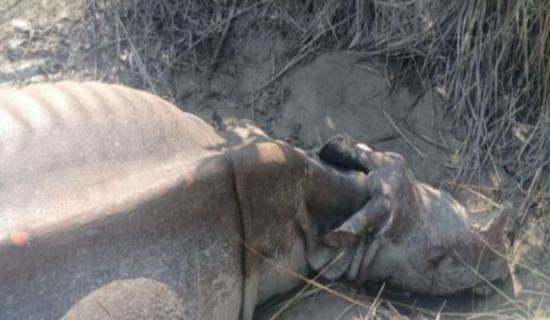- Saturday, 18 October 2025
Glorious Flight Of Kingfisher
The white-throated kingfisher, also known as the white-breasted kingfisher, is a striking bird commonly found in agricultural fields, swamps, ponds, lakes, canals, wetlands, parklands, mangroves, fishponds, and even the dry forests of Nepal. Its name comes from the prominent white patch on its throat and breast, which stands out against its vivid plumage. The scientific name, Halcyon smyrnensis, derives from the Greek word “Halcyon”, meaning kingfisher.
Swedish biologist Carl Linnaeus first described this species in 1758 in the tenth edition of Systema Naturae. The 19th century marked its first recorded presence in Nepal. Globally, the kingfisher family includes 118 species, divided into several subfamilies and 19 genera. In Nepali, this bird is known as Setokanthe Matikore.
I have often observed this species feeding on small reptiles and fish. However, one remarkable encounter in Nagarjuna forest within Shivapuri-Nagarjuna National Park left me astonished. I watched a kingfisher hunt and immobilise a large snake by gripping it with its powerful bill before flying off with its prey. While they are best known for fishing, kingfishers also venture into forests in search of reptiles. Their popularity extends beyond nature—several companies and products worldwide bear the name “Kingfisher”. This species is widespread across Nepal, Turkey, Egypt, the Middle East, the Indian subcontinent, China, and Southeast Asia.
The white-throated kingfisher is instantly recognisable by its dazzling bright-blue back, wings, and tail, which glisten in sunlight. Its head, shoulders, and lower abdomen are chestnut, while the throat and chest are pure white. A large red bill and legs add to its vivid appearance.
This bird measures 27–28 cm in length and weighs 66–81grams. In flight, its short, rounded wings display bold white spots. The sexes appear similar, though juveniles are duller in colour. Its flight is swift and direct, making it a visually striking short-distance flyer.
A medium-sized, generalist predator, the white-throated kingfisher helps regulate populations of small species by feeding on fish, crustaceans, frogs, lizards, snakes, mice, freshwater crabs, worms, and large insects. Parents also feed invertebrates to their chicks. Though it rarely drinks water, it baths regularly.
In the Terai, it is commonly seen perched on Ipomoea carnea plants, trees, and wires near fishponds and wetlands, bobbing its head and tail as it watches for prey before diving swiftly to catch it. Its loud calls can be heard clearly from afar.
Breeding begins with the onset of the monsoon. Males defend territories and call loudly to attract females, raising their bills and flashing their white throats during displays. Courtship involves vigorous wing flapping and tail wagging, while females respond with long, low calls. Nesting pairs excavate tunnels in mud banks or rocky slopes to create nesting chambers. Breeding takes place from January to August, peaking between April and July. A typical clutch contains 4–7 white eggs, incubated for 20–22 days. Chicks hatch in about 18–20 days.
According to Dr Hem Bahadur Katuwal, assistant professor at Xishuangbanna Tropical Botanical Garden, Chinese Academy of Sciences, China, the white-throated kingfisher is one of the nine kingfisher species found in Nepal. It is a regular breeding resident, usually at or below 1,500 metres, and widespread throughout the country from east to west. Future danger could come from destruction of habitat, reduction of prey, and use of agrochemicals.
The greatest threats to the white-throated kingfisher are the drying of ponds, canals, and wetlands, along with predation by gulls. While still classified as a species of least concern by the IUCN Red List, continued habitat degradation could affect its population.
(The author is a wildlife photographer. The photos used in this article are by the author.)

















